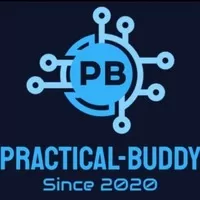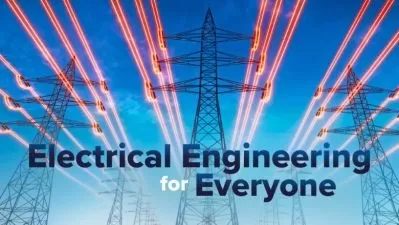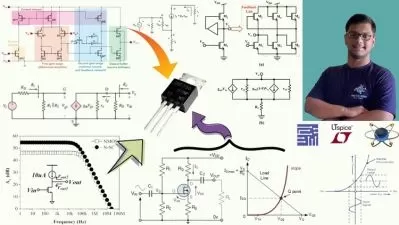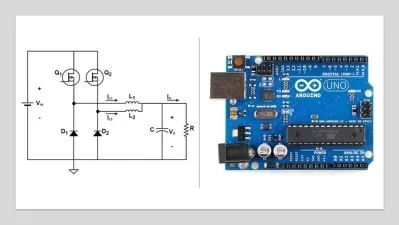Semiconductors & its Application in Analog Electronics
Practical Buddy
6:25:05
Description
Semiconductors & it's Real World Application in Electronics, Electrical & Instrumentation Engineering
What You'll Learn?
- All the basic concepts of semiconductors
- Semiconductors will help them to understand how electronic devices like diodes, transistors, etc work
- Concept of Energy, Valence and Conduction band diagrams
- Understand the internal structure of diodes
- Intrinsic and extrinsic semiconductors
- Clears the basic concepts of electronic devices (EDC)
Who is this for?
What You Need to Know?
More details
DescriptionBefore enrolling in the course I expect that you must be having a good idea about current electricity, chemistry and some knowledge about conductors. If you don't have any idea about it then you can enroll in rest of my courses which deals with all these concepts in depth.
In this course, you will learn all the things about semiconductors from scratch. Below IÂ had listed certain topics this would be our roadmap. There would also be certain topics that I'm not giving in this particular roadmap but its concept would be required to proceed further. So I had also explained that part.
@ Roadmap:-
Introduction to semiconductors
Difference between conductors, semiconductors, and an insulators
Energy band diagram for sodium and silicon atoms
Valence band and Conduction band diagram for sodium and silicon atoms
Forbidden Energy Gap
Intrinsic and Extrinsic Semiconductors
Internal structure or internal working of the p-n junction diode (Application part)
So this was all about the course.
@ Outcome of the course:-
As you all know that I'm making series on electronics, this is a course-2 and this course is a prerequisite to the next course where we will be dealing with diode circuits, Bjt and Fet's circuits, etc. So to understand the core electronics part or how any electronic device behaves, you should be very much well acquainted with the part of the semiconductor.
For those who want to perceive their future in the VLSI domain, this course is purely meant for them.
And there are many more advantages which I'm not revealing here, you yourself will get to know what knowledge you have acquired after completing this course.
Who this course is for:
- Anyone who wants to learn semiconductors in depth
- Beginner who wants to start his/her career in electronics
- Beginner who wants to perceive his career in VLSI domain
Before enrolling in the course I expect that you must be having a good idea about current electricity, chemistry and some knowledge about conductors. If you don't have any idea about it then you can enroll in rest of my courses which deals with all these concepts in depth.
In this course, you will learn all the things about semiconductors from scratch. Below IÂ had listed certain topics this would be our roadmap. There would also be certain topics that I'm not giving in this particular roadmap but its concept would be required to proceed further. So I had also explained that part.
@ Roadmap:-
Introduction to semiconductors
Difference between conductors, semiconductors, and an insulators
Energy band diagram for sodium and silicon atoms
Valence band and Conduction band diagram for sodium and silicon atoms
Forbidden Energy Gap
Intrinsic and Extrinsic Semiconductors
Internal structure or internal working of the p-n junction diode (Application part)
So this was all about the course.
@ Outcome of the course:-
As you all know that I'm making series on electronics, this is a course-2 and this course is a prerequisite to the next course where we will be dealing with diode circuits, Bjt and Fet's circuits, etc. So to understand the core electronics part or how any electronic device behaves, you should be very much well acquainted with the part of the semiconductor.
For those who want to perceive their future in the VLSI domain, this course is purely meant for them.
And there are many more advantages which I'm not revealing here, you yourself will get to know what knowledge you have acquired after completing this course.
Who this course is for:
- Anyone who wants to learn semiconductors in depth
- Beginner who wants to start his/her career in electronics
- Beginner who wants to perceive his career in VLSI domain
User Reviews
Rating
Practical Buddy
Instructor's Courses
Udemy
View courses Udemy- language english
- Training sessions 22
- duration 6:25:05
- Release Date 2022/12/04
















